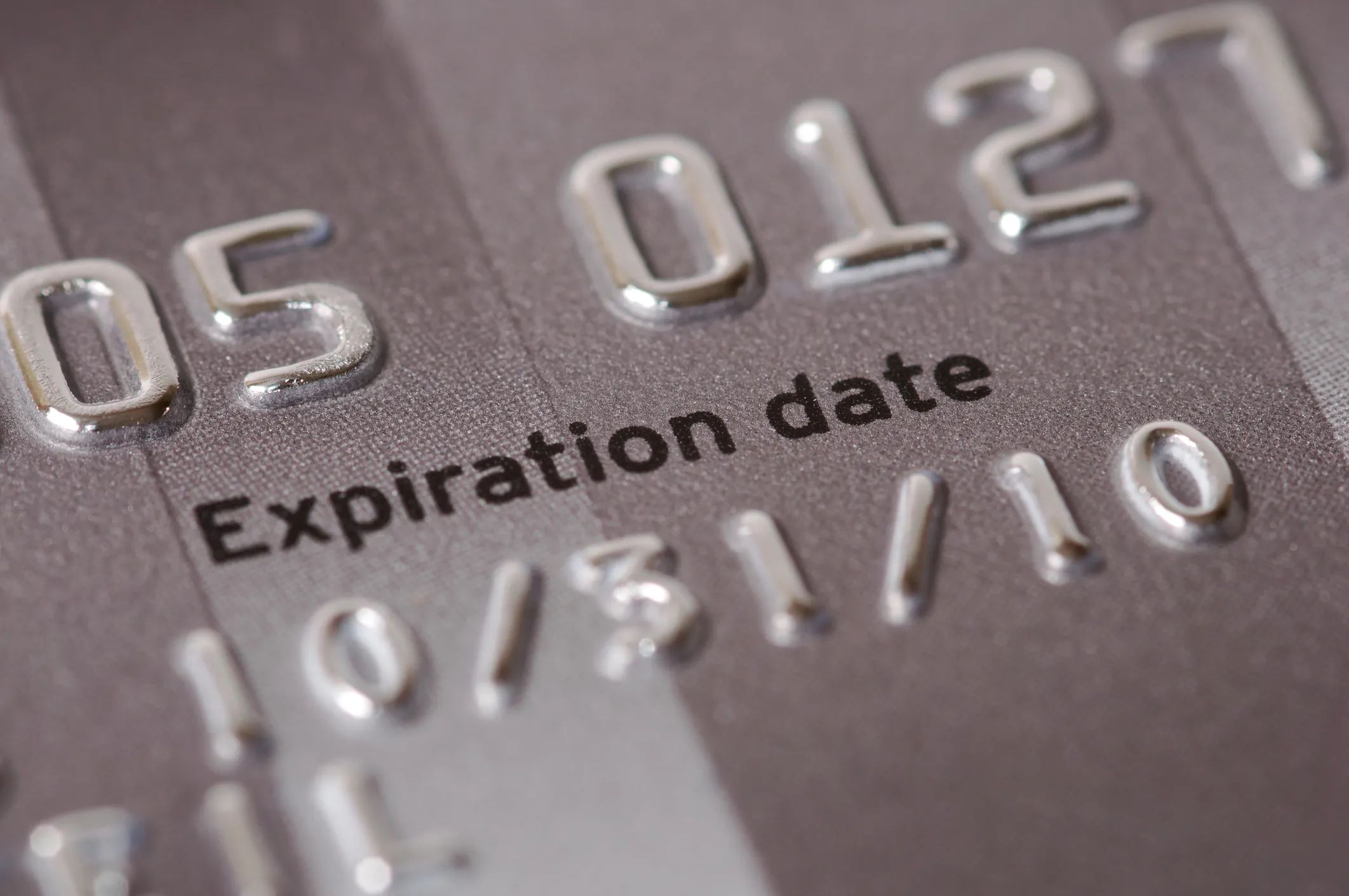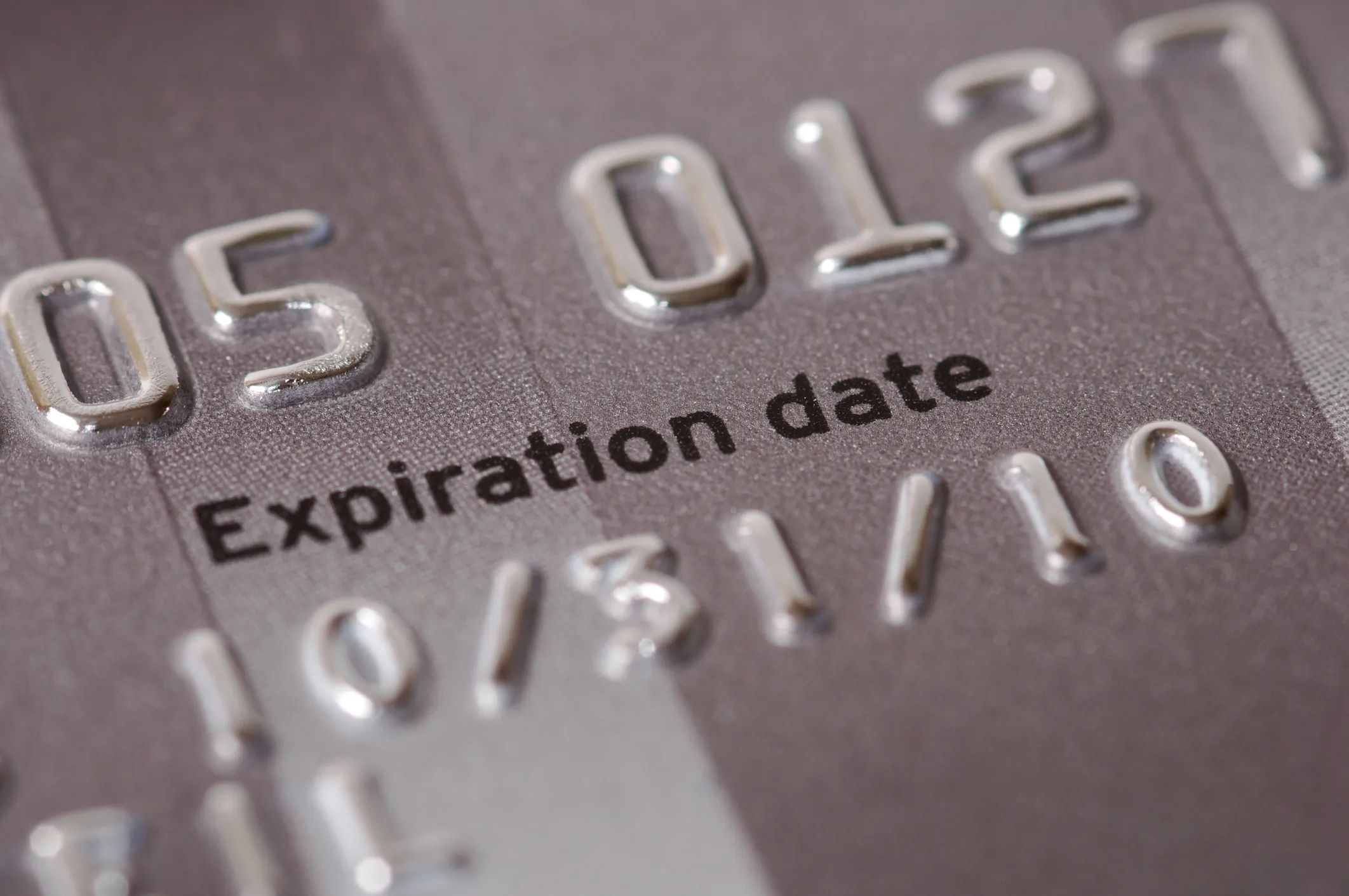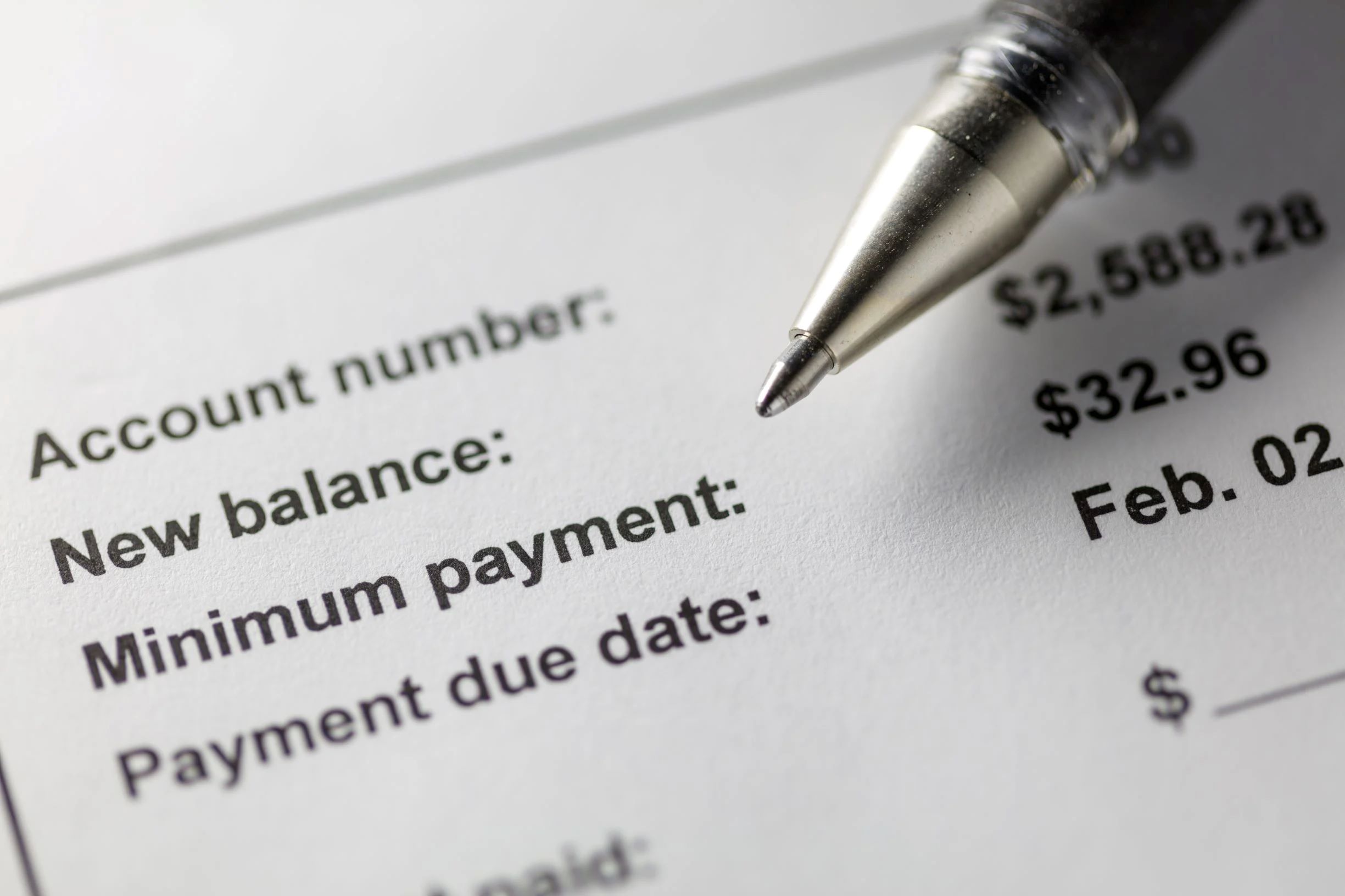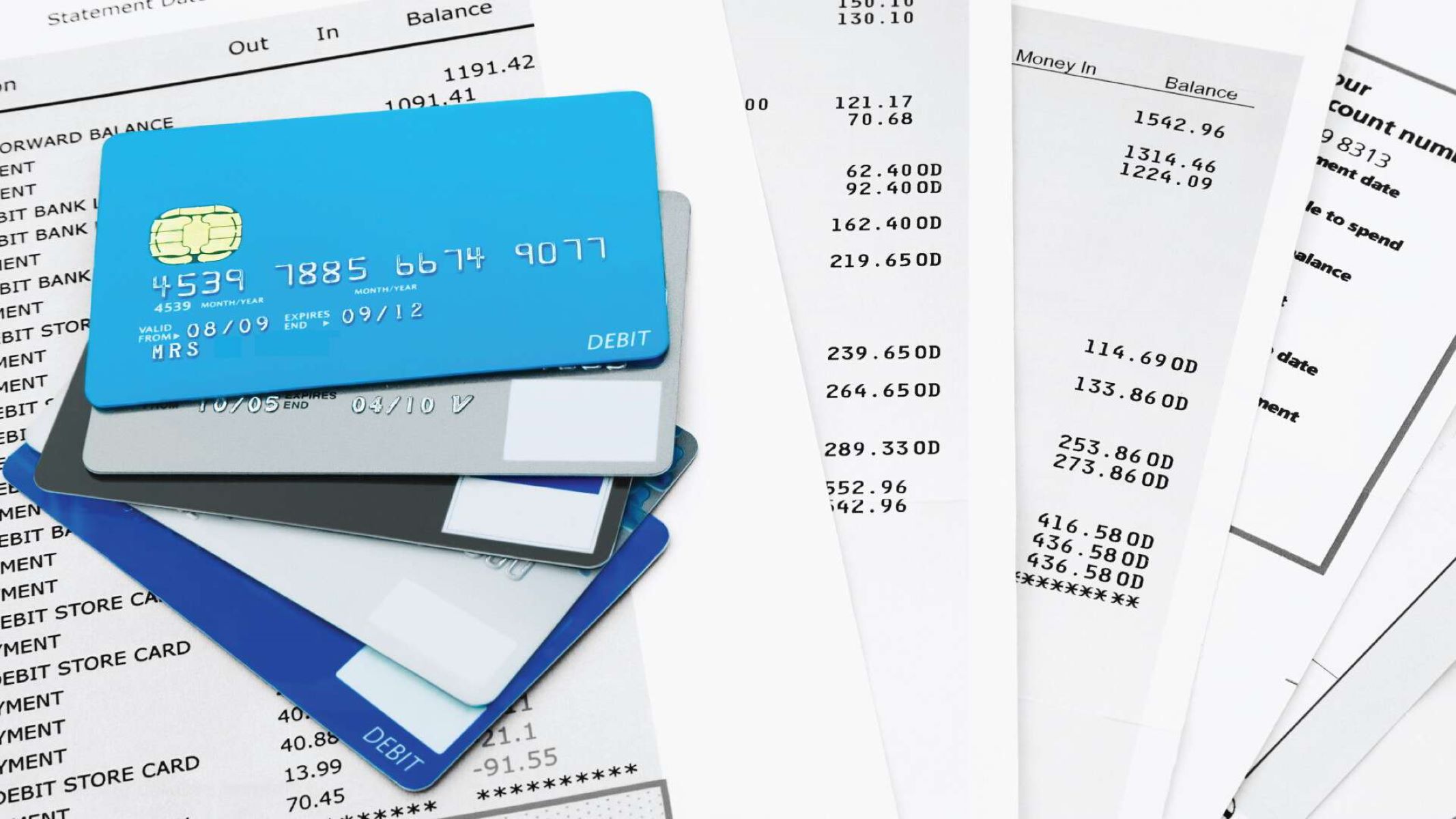

Finance
What Is The Expiration Date On A Credit Card
Published: October 25, 2023
Discover the importance of expiration dates on credit cards and how they impact your finances. Stay informed and avoid any unexpected issues.
(Many of the links in this article redirect to a specific reviewed product. Your purchase of these products through affiliate links helps to generate commission for LiveWell, at no extra cost. Learn more)
Table of Contents
- Introduction
- What is the expiration date on a credit card?
- Why do credit cards have expiration dates?
- Understanding the format of expiration dates
- How to find the expiration date on your credit card
- Do you need to update your credit card before it expires?
- Can you use a credit card after it expires?
- What happens if you use an expired credit card?
- How to update your credit card information
- Conclusion
Introduction
When you receive a new credit card, you may notice a small detail prominently displayed on the front – the expiration date. This seemingly insignificant date actually holds great importance in the world of credit cards. The expiration date on a credit card is the date on which the card becomes invalid and can no longer be used for transactions.
With the widespread use of credit cards for various financial transactions, it is essential to understand the significance of the expiration date and how it impacts your card’s usability. In this article, we will delve into the details of credit card expiration dates, their purpose, finding the expiration date on your card, and what happens when your card expires.
Additionally, we will discuss the importance of updating your credit card information before it expires, and the steps involved in doing so. So, whether you’re a seasoned credit card user or new to the world of plastic money, this article will provide you with all the information you need to know about credit card expiration dates.
What is the expiration date on a credit card?
The expiration date on a credit card is the date that signifies the end of the card’s validity period. It is typically printed on the front of the card and consists of a month and year. This date serves as a security measure and helps prevent the unauthorized use of a credit card.
When you receive a credit card, it is important to take note of the expiration date as it determines how long you can use the card. Once the expiration date has passed, the card is considered expired, and you will no longer be able to use it for transactions. It is essential to keep track of the expiration date to avoid any inconveniences when trying to make purchases or payments.
Credit card expiration dates are typically set at a specific duration, usually ranging from two to five years. The duration may vary depending on the card issuer and the type of card. For example, some credit cards may have a longer expiration period for premium or high-end cards, while others may have a shorter duration for introductory or promotional cards.
It’s important to note that the expiration date refers to the month and year when the card becomes invalid, not the exact day. For example, if a credit card’s expiration date is listed as “08/24,” it means that the card can be used until the last day of August 2024.
Having a clear understanding of the expiration date on your credit card will help you manage your finances effectively and ensure that you have a valid card for your financial needs. It is crucial to familiarize yourself with this date and take the necessary steps to update your card’s information before it expires to avoid any disruptions in your financial transactions.
Why do credit cards have expiration dates?
At first glance, it may seem unnecessary for credit cards to have expiration dates. However, there are several important reasons why credit card issuers implement expiration dates:
- Security: One of the primary reasons for credit card expiration dates is to enhance security. By assigning an expiration date to a credit card, issuers can mitigate the risk of fraudulent activity. Over time, credit card technology evolves, and new security measures are implemented. Requiring customers to update their cards periodically ensures that they receive the latest security features and helps protect against unauthorized use.
- Updates and Reissuance: Credit card expiration dates also play a role in updating customer information. By setting an expiration date, issuers prompt customers to review and update their contact details, such as address and phone number. This ensures that the issuer has accurate and up-to-date information, which is crucial for delivering important notifications and preventing fraud.
- Credit Card Lifecycle Management: Credit cards are not intended to have an indefinite lifespan. By assigning an expiration date, issuers can efficiently manage the lifecycle of credit cards. This includes things like regularly updating the card’s design and features, reissuing cards with expired magnetic strips, or migrating to new payment technologies.
- Incentivize Card Usage: Expiration dates can also serve as an incentive for customers to continue using their credit cards. By setting an expiration date, card issuers encourage users to engage with their credit card accounts regularly and make use of the card’s benefits and rewards. As the expiration date approaches, cardholders may be more inclined to use their card to maximize rewards or take advantage of promotional offers.
- Fraud Prevention: Finally, expiration dates help prevent the potential misuse of lost or stolen credit cards. If a card is lost or stolen, the expiration date provides an additional layer of protection. Even if a thief comes into possession of the physical card, they will not be able to use it once it has expired.
Overall, the inclusion of expiration dates on credit cards is a vital component of ensuring the security, efficiency, and effective management of credit card accounts. By regularly updating and reissuing cards, issuers can stay at the forefront of security measures and maintain accurate customer information.
Understanding the format of expiration dates
Expiration dates on credit cards typically follow a standard format to ensure consistency across different card issuers. While the specific format may vary slightly, the most common format is MM/YY, where MM represents the two-digit month and YY represents the two-digit year.
For example, if a credit card displays an expiration date of 09/23, it means that the card will expire on the last day of September 2023. It’s important to note that expiration dates are often abbreviated, with the month represented by its numerical value (e.g., 01 for January, 02 for February).
When reading the expiration date, it’s essential to interpret it correctly to avoid any confusion or mistakes when using the card. Always double-check the digits and make sure you understand the month and year represented by the expiration date.
Some credit cards may include additional information along with the expiration date. For example, you may find a “valid from” or “valid until” date listed alongside the expiration date. The “valid from” date indicates when the card can be used for transactions, while the “valid until” date represents the last day the card can be used.
It’s worth mentioning that some newer credit cards utilize an alternative format for expiration dates, such as using the full month name instead of a numerical value. For example, the expiration date may appear as “January 2024” or “Dec 24”. While the format may differ, the underlying principle remains the same.
Understanding the format of expiration dates is essential to ensure that you can accurately read and interpret the information on your credit card. It allows you to plan ahead and take necessary actions, such as updating your card information or considering a card renewal, before the expiration date arrives.
How to find the expiration date on your credit card
Locating the expiration date on your credit card is relatively easy, as it is typically displayed on the front of the card. Here are a few steps to help you find the expiration date:
- Take out your credit card and hold it in front of you.
- Look for a series of numbers printed on the front of the card.
- The expiration date is usually listed as two digits for the month followed by two digits for the year. For example, if the numbers read “09/23”, it means that the card will expire on the last day of September in 2023.
- In some cases, the expiration date may be listed in a different format, such as “SEP 23” or “September 2023”. Regardless of the format, the information refers to the same date.
- Take note of the expiration date and make sure to keep it in mind.
If you are unable to find the expiration date on the front of the card, you may need to check the back. Some credit cards, particularly those with a chip, may have the expiration date printed on the back of the card, usually on the top right corner.
It’s important to remember that credit card expiration dates are subject to change. Issuers may send you a replacement card with a new expiration date before your current card expires. Keep an eye out for any communications from your credit card issuer regarding expiration dates or card replacement.
By knowing how to find the expiration date on your credit card, you can stay informed about when your card will expire and take appropriate action before it becomes invalid. This includes updating your card information with merchants or service providers to avoid any disruptions in your financial transactions.
Do you need to update your credit card before it expires?
Yes, it is crucial to update your credit card information before it expires to ensure uninterrupted use and avoid any inconveniences. Here are a few reasons why updating your credit card before it expires is important:
- Prevent disruptions: Updating your credit card before it expires helps prevent any potential disruptions in your financial transactions. If your card expires and you haven’t provided updated information to relevant merchants or service providers, your recurring payments, subscriptions, or online purchases may fail. By proactively updating your card information, you can ensure a smooth transition and avoid any interruptions.
- Stay compliant: Some merchants or service providers may have compliance requirements that mandate updating credit card information before expiration. This is particularly relevant for businesses that store customer data for recurring payments or subscriptions. Keeping your card information up to date ensures compliance with industry regulations and helps maintain a positive relationship with merchants.
- Enhance security: As mentioned before, credit card expiration dates are designed to enhance security. By updating your card before it expires, you ensure that you benefit from the latest security features and technology that newer card versions offer. This reduces the risk of fraud and unauthorized use of your card.
- Improve account management: Keeping your credit card information up to date allows you to have accurate records of your financial accounts. It enables you to track your expenses, monitor transactions, and manage your finances effectively. By updating your card details on time, you can avoid confusion and maintain a clear overview of your financial activities.
- Avoid manual updates: If your credit card expires, certain service providers or merchants may require you to manually update your payment information. This can be time-consuming and inconvenient, especially if you have multiple accounts tied to your credit card. By updating your card information before it expires, you can save time and effort by ensuring that your accounts are automatically updated.
While it may not be mandatory to update your credit card information before it expires, it is highly recommended to do so. It helps you maintain a smooth and hassle-free financial experience while keeping your accounts secure and up to date.
Can you use a credit card after it expires?
No, you generally cannot use a credit card after it has expired. Once the expiration date has passed, the card becomes invalid, and merchants are not authorized to accept transactions using an expired card.
The reason behind this is that credit card expiration dates are in place to enhance security and ensure that consumers are using the most up-to-date payment technology with the latest security features. By regularly updating credit cards, issuers can mitigate the risk of fraud and unauthorized use.
Attempting to use an expired credit card may result in the transaction being declined or flagged as fraudulent. The card will not be recognized by payment terminals or online systems, as the expiration date serves as an essential validation measure.
It’s important to note that even if a merchant manually accepts a transaction using an expired card, the payment may still be declined during processing by the card issuer’s authorization network.
If your credit card has expired, it is necessary to contact your card issuer to request a replacement card with a new expiration date. Most credit card issuers automatically issue new cards with updated expiration dates before the current card expires and send them to the cardholder’s registered address.
However, if you have not received a new card, or if your current card has already expired, it is crucial to proactively reach out to your card issuer to request a replacement. This ensures that you have a valid credit card to carry out financial transactions without any interruptions.
Remember, using an expired credit card can lead to inconvenience and may result in declined transactions. It’s always best to keep track of your credit card’s expiration date and take the necessary steps to update your card information in a timely manner.
What happens if you use an expired credit card?
If you attempt to use an expired credit card for a transaction, the transaction is likely to be declined or flagged as invalid. It is important to understand the consequences of using an expired credit card:
- Transaction Decline: Most merchants and payment processors have systems in place to validate credit card information, including the expiration date. If the expiration date on your credit card has passed, the payment system will recognize it as an invalid card, and the transaction will be declined. This means you will not be able to complete the purchase or payment using the expired credit card.
- Potential Embarrassment and Inconvenience: Using an expired credit card can lead to an embarrassing situation, especially if you are attempting to make a purchase or payment in a public setting. Additionally, it can cause inconvenience as you may need to find an alternative payment method or reschedule the transaction for a later date.
- Risk of Penalties or Fees: Some merchants or service providers may impose penalties or additional fees for attempting to use an expired credit card. These fees could range from a nominal charge to a percentage of the transaction amount, depending on the merchant’s policies. It’s essential to familiarize yourself with the terms and conditions of the merchant or service provider to avoid incurring unnecessary costs.
- Potential Damage to Credit Score: Consistently using an expired credit card or having a history of declined transactions can potentially impact your credit score. While a single instance may not significantly harm your credit score, a pattern of declined transactions can raise concerns among lenders or credit reporting agencies. It’s important to maintain a good payment history and avoid frequent declined transactions.
- Transaction Delays: If you attempt to make a recurring payment or have an automatic billing set up with an expired credit card, the transaction may be delayed or fail to process. This can result in late fees or service disruptions, depending on the nature of the payment or subscription.
It’s important to note that using an expired credit card is not only inconvenient but also potentially violates the terms and conditions set by your card issuer. To avoid these issues, make sure to regularly check the expiration date on your credit card and contact your card issuer to request a replacement before it expires.
By using a valid, non-expired credit card, you can ensure smooth transactions, avoid penalties or fees, and maintain a good credit history.
How to update your credit card information
Updating your credit card information is a relatively straightforward process, and there are a few common methods you can use to ensure your card details are up to date:
- Contact your card issuer: The first step to update your credit card information is to contact your card issuer directly. The contact information is usually provided on the back of your credit card or on your monthly statement. Call the customer service number and inform them that you need to update your card information. They will guide you through the necessary steps and may require verification of your identity for security purposes.
- Online account management: Most credit card issuers provide online account management portals or mobile apps that allow you to update your card information conveniently. Log in to your account using the provided credentials, navigate to the “Manage Cards” or “Payment Options” section, and look for the option to update your card details. Follow the instructions provided, which typically include entering the new expiration date and any other required information.
- Update with merchants or service providers: If you have recurring payments or subscriptions linked to your credit card, it’s important to update your card information with those merchants or service providers. This includes online retailers, utility companies, streaming services, and any other entities that charge your credit card regularly. Visit their websites or contact their customer support to provide the updated card details and ensure seamless payment processing.
- Update payment information for online accounts: If you have saved your credit card information on various online platforms, such as e-commerce websites or payment gateways like PayPal, make sure to update your payment information there as well. Log in to each account and navigate to the payment settings or wallet section to update your card details.
- Watch for replacement cards: In some cases, credit card issuers automatically send replacement cards with updated expiration dates before your current card expires. Keep an eye on your mailbox for any communication or replacement cards from your card issuer. Once you receive the new card, activate it following the provided instructions, and start using the updated card details.
It’s essential to update your credit card information before your current card expires to avoid any disruptions in your financial transactions. Keeping your card details up to date with both your card issuer and merchants/service providers ensures that your payments are processed smoothly and that you have access to all your preferred features and benefits.
Remember to review your credit card statements regularly to verify that the updated card information is being used correctly and that there are no unauthorized charges or discrepancies. By staying proactive and informed, you can maintain control over your credit card account and enjoy a seamless financial experience.
Conclusion
Understanding the expiration date on your credit card is essential for managing your finances effectively. The expiration date ensures the security of your card and prompts you to update your card information periodically. By familiarizing yourself with the importance and implications of credit card expiration dates, you can navigate the world of credit cards with confidence.
Remember to check the expiration date on your credit card and make note of it to avoid any inconveniences when making purchases or payments. It is necessary to update your credit card information before it expires to prevent disruptions, stay compliant with merchants, enhance security, and improve your account management.
Furthermore, using an expired credit card can result in declined transactions, potential penalties or fees, and even damage to your credit score. Take the necessary steps to update your card information promptly to ensure uninterrupted use of your credit card and maintain a positive financial standing.
Whether it’s contacting your card issuer, utilizing online account management portals, or updating payment information with merchants and service providers, updating your credit card information is a relatively straightforward process.
By staying proactive and staying on top of your credit card’s expiration date, you can ensure smooth transactions, protect your financial information, and enjoy a hassle-free financial journey.
So, take a moment to check the expiration date on your credit card and take the necessary steps to update your card information before it expires. By doing so, you can continue to reap the benefits of your credit card while keeping your financial transactions secure and seamless.














